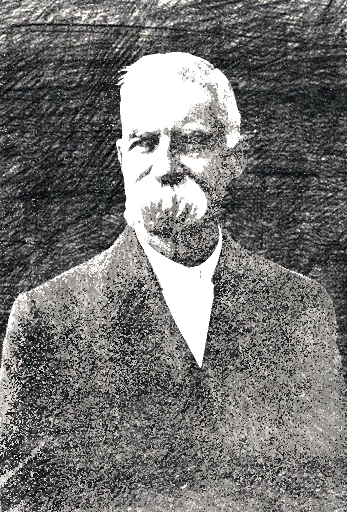John McTammany
John McTammany (1845-1915) has been credited with the invention of the player piano. He also patented several devices that were important to the development of automatic piano construction. However, it has been said that credit must be shared with many others, both in the United States and in Europe, for having contributed important principles and components to what became a very popular distraction during the early part of the 20th century.
In 1881, a patent was issued to McTammany for his invention of a piano player. The Cambridge, Massachusetts-based inventor’s patent described the mechanical musical instrument as a “mechanism for automatic playing of organs using narrow sheets of perforated flexible paper which governed the notes to be played.” Apparently, McTammany had the engineering know-how to come up with a fully functional player piano, but he lacked the marketing savvy or financial resources to turn his invention into a commercial success. Thus, the first completely automatic piano player to be manufactured in the U.S. was the “Angelus,” which was made by Edward H. Leveaux in England in 1897 and was patented in 1879. He was also issued a U.S. patent in 1881 for an “apparatus for storing and transmitting motive power.”
By 1910, player pianos had become very popular, especially among the affluent, as a form of home entertainment. By this time, standardization of roll sizes and perforation spacing had paved the way for mass penetration of the market. Salesmen were served well by selling not only the pianos, but also the new rolls and accessories that went with them post-purchase, which kept business strong for some time. Additionally, with the popularization of the player piano, everyone, musically skilled or not, became a potential customer.
During the Great Depression, the player piano's popularity diminished, and the advent of the motion picture pushed it down even further as the public began spending less time entertaining itself at home. But then, the player piano began to go into the picture house as an accompaniment to the silent movies – as a sort of poor man's orchestra. Some of the pianos were “beefed up” with pipe organs and effects, which would allow the accompanist to capture the mood of the film. However, when films became “talkies” and sound accompanied the film and was played through electrical reproduction devices, the player piano was relatively forgotten. The device remains more of a curiosity than anything else today.
Meanwhile, McTammany left the music business shortly after his patent was granted, and he turned his inventiveness to creating voting machines. There are no details of them in his player piano books, but the use of punched paper rolls in player pianos suggests that there is a direct link with those devices and with punch-card voting machines, which are still used widely today. Reportedly, McTammany later turned his efforts to the temperance movement and prohibition.
He died in 1915 at the age of 70.


